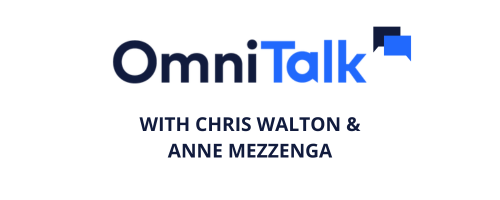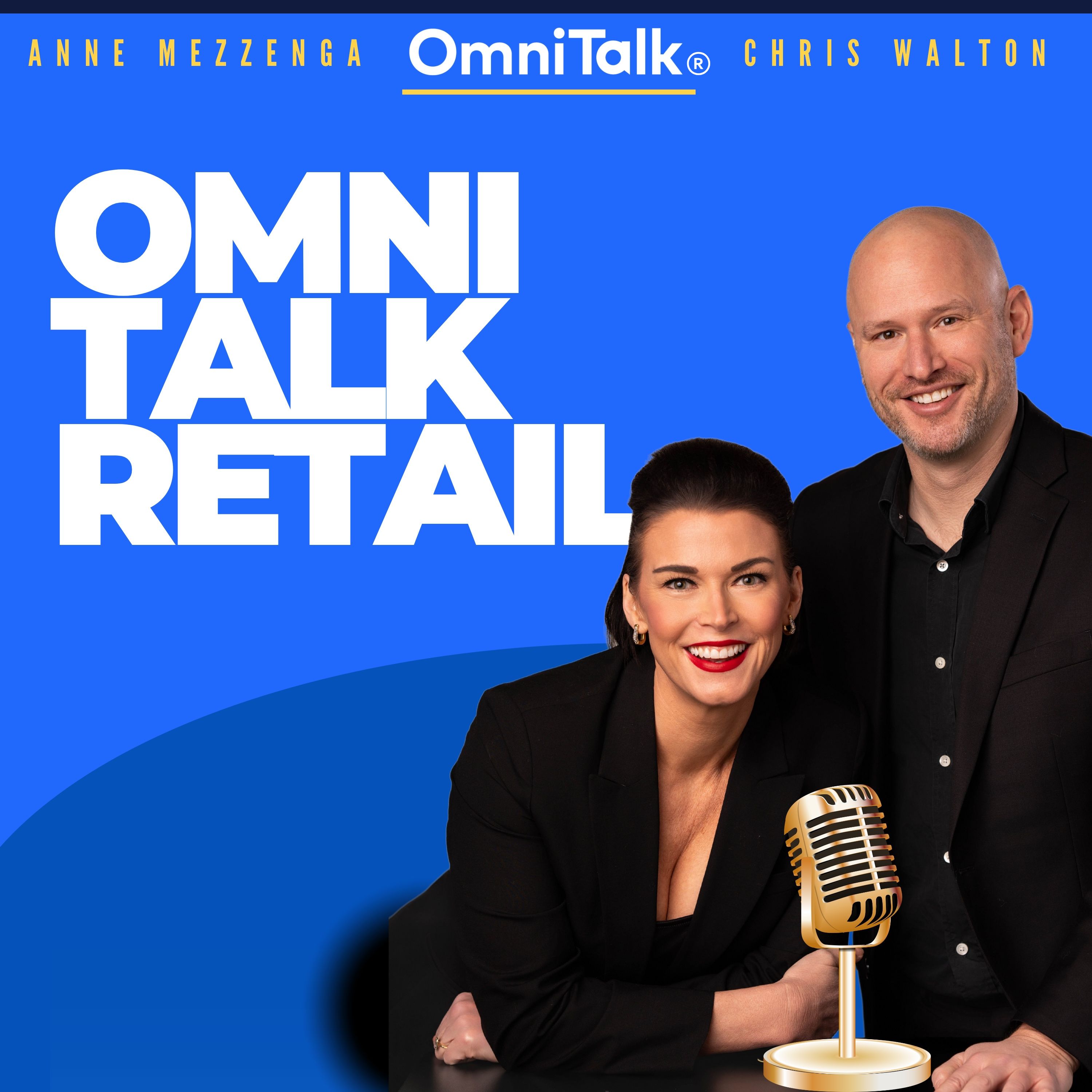Walmart’s AI Fashion Tool | Trend to Product Speeds Up Design by 18 Weeks
In this episode of Omni Talk Retail Fast Five, sponsored by the A&M Consumer and Retail Group, Simbe, Mirakl, Ocampo Capital, Infios, and ClearDemand, Chris and Anne dive into Walmart’s latest AI-powered innovation: the Trend-to-Product tool (0:03). The duo explains how the tool uses generative AI to produce trend-driven mood boards, shorten design timelines by up to 18 weeks (1:10), and assist Walmart in appealing to newer, more affluent shoppers through trendier fashion options (2:44).
Anne shares her experience working on similar product development teams at Target and emphasizes how this tool eliminates the tedious manual design process (1:26). Chris voices caution around AI fatigue and the importance of maintaining focus on big-picture strategies in stores versus chasing shiny objects online (3:36).
The episode closes with thoughtful reminders about managing open-to-buy limits and making smarter decisions amid the flood of trend data (6:30).
For the full episode head here: https://youtu.be/US96EqI2Bnk
#walmart #retailinnovation #aiinfashion #generativeai #retailtech #walmartfashion #merchandising
This podcast uses the following third-party services for analysis:
Podcorn - https://podcorn.com/privacy
Transcript
Walmart has a new trend sensing design tool that uses AI and generative AI to bring on trend affordable items to the retailer faster than ever before and without compromising quality.
Speaker A:And if that sounded like it was grabbed from a press release, that's because it was.
Speaker A:According to a Walmart press release, the new tool dubbed Quote Trend to Product uses AI and generative AI to analyze and synthesize global data and trends, pulling information from the Internet and tastemakers to power the Walmart fashion team in creating on trend high quality items with greater speed.
Speaker A:It takes the research and design phase from weeks to minutes and then uses generative AI to create mood boards replete with collection names, colors, textures and ideas.
Speaker A:Extra points for dropping replete into your press release, Walmart.
Speaker A:From there, the designer and merchants refine the mood boards, look at, sell through data and lean on their own experience to create the final pieces that will form the collection.
Speaker A:Then as the final step, Trend to Product generates a fashion tech pack for the collection which instructs suppliers on exactly how to make each item.
Speaker A:All told, Walmart claims the Trend to Product claims that Trend to Product shortens the traditional production timeline for Walmart fashion by as much as 18 weeks.
Speaker A:Sounds like it's mostly on the front end of the process.
Speaker A:And are you buying or selling Walmart's new trend to product gen AI tool?
Speaker B:I'm, I'm buying for two reasons.
Speaker B:The first reason is that when I was at Target we, I worked on a lot of the teams that were kind of coming up with some of these new products and then we're helping kind of figure out the marketing plans as, as Target was growing new brands like Pillow for it for example.
Speaker B:And just the, I love this because I think it's a great use case here for where I can step in and help cut down a process that was very manual and very tedious.
Speaker B:And so I love this for the points of putting those mood boards together.
Speaker B:Like there were five different creative directors that each had their own Pinterest boards that were like sharing these.
Speaker B:It was all like a very, a very manual process.
Speaker B:And I think that this will help consolidate those trends that each one of those creative directors are seeing and really start to get things rolling more quickly and give them a quicker like swipe left or swipe right if this is kind of the trend that we're all leaning towards.
Speaker B:So I love that part of it.
Speaker B:But second, I also think that this is a great way for Walmart to be able to start to kind of break off from the, the like affordable Apparel that they're providing for all, you know, for the rest of the country that, that like dependable, low price, good quality basics product that they're putting out there.
Speaker B:But it also allows them to start to test in some smaller ways more on trend items that maybe will specifically roll out to certain locations of Walmart like that we're seeing them do with a scoop line right now to really like double down on getting appealing fashion product for that new higher income shopper that is now drawing into Walmart and is doing, placing their, their grocery order on Walmart.
Speaker B:Plus I think this is a place where they can get that trendier product to market faster, to kind of capture someone in that moment who may not have been planning on buying that like spring dress, but probably will now when they see the price point and just how, how trend forward Walmart is when they, they least expected it.
Speaker B:But what do you think?
Speaker B:Are you buying?
Speaker B:Are you selling?
Speaker B:Where are you?
Speaker A:Yeah, I'm buy, I'm buying the, the idea and the tool itself.
Speaker A:But I'm, I'm a ca.
Speaker A:I'm a little more cautious on it than you are.
Speaker A:I agree, I agree with you on the first part, but the second part I'm a little more cautious.
Speaker A:So.
Speaker A:And I think we have to be very clear on the use case too.
Speaker A:This is basically a tool for idea generation to speed up the process for merchants to design and collaborate on the line development.
Speaker A:So it's all the front end, you know, it doesn't speed up anything on the production side.
Speaker A:So is that needed?
Speaker A:Yes, 100% like you said.
Speaker A:Yeah.
Speaker A:And I being in home and merchandising for many, many years, I sat in many of those meetings where you know, concepting was done and it's just, it's just a, it's just a really laborious process and, but still this could be adjustment for people to get used to, particularly on the design side because they're having to like, you know, figure out how to use this and change their processes.
Speaker A:Some people are going to gravitate towards it, some people are not.
Speaker A:But you know, at the end of the day it's good because it gives them more time to read and identify market trends before determining what bets to place either what bets are going to place before rolling out to almost 4,000 plus stores.
Speaker A:Right.
Speaker A:Like that's a really big bet.
Speaker A:But I think as well there's things to be cautious about because you could also use it in the online space like you said, which you can do small batch runs and you could use it for that too.
Speaker A:You could do it for store tests.
Speaker A:But I think you gotta be cautious about it because if you run too willy nilly with this, if you just have your design teams and your merchants looking at all this crazy new product, they're going to get distracted by the shiny penny of all the crazy new product in the online space particularly.
Speaker A:And that's going to be, it's going to be distracting.
Speaker A:But the other part about it too is you've got to, you got to make sure that you're portioning out your time against what's most important in terms of the bigger bets that you're going to place in store.
Speaker A:So you got to make sure Denise and Cadella, who's listening in her team, who listens to our show, you know, you got to make that you don't take your eye off the ball in terms of using this and portion it out in the right way to make sure your bets are placed right.
Speaker A:Because the other part I worry about too is if you get too crazy, you're too willy nilly, particularly designing for the test, designing for the online space.
Speaker A:You're going to burn people out too.
Speaker A:Like, because AI burnout is real.
Speaker A:I can tell you that firsthand.
Speaker A:You can do so much, so much faster that you're like, oh my God, I have extra time.
Speaker A:I can just keep designing, I can keep designing, I can keep designing, I can keep buying, I can keep buying.
Speaker A:And that's a problem.
Speaker A:So, so that, that's why I caution it, I think.
Speaker A:But I think at the end of the day it makes sense.
Speaker A:But you just got to be smart about how you use it.
Speaker B:Yeah, 100%.
Speaker B:I think those are great, great watch outs, especially the burn, the burnout part.
Speaker B:Like you are able to process a lot more information.
Speaker B:You're getting a lot more information.
Speaker B:You are getting a lot more information from a lot of those sources online too.
Speaker B:You know, it's not just the one or two outlets, it's you know, all the social platforms too that are coming out and all the people like there, there's just more content that you can, you can take in too.
Speaker B:So I think that's a really good and very smart watch out for the Walmart team.
Speaker A:At the end of the day you're open to buy, it doesn't change and like you're open to buy, it doesn't change either.
Speaker A:So you've got to be careful about how you're going to use this.
Speaker A:And, and you got to think about it.



